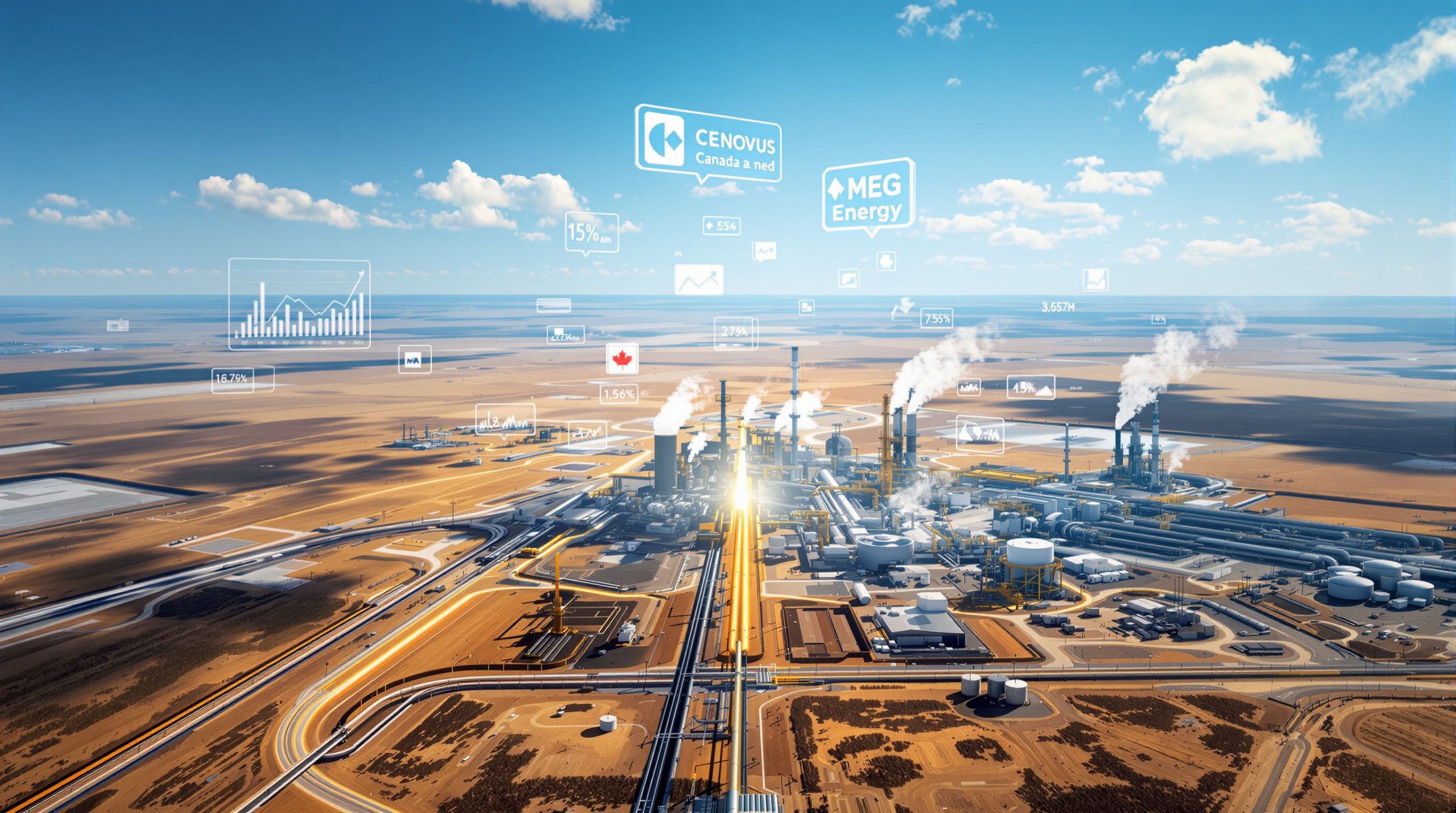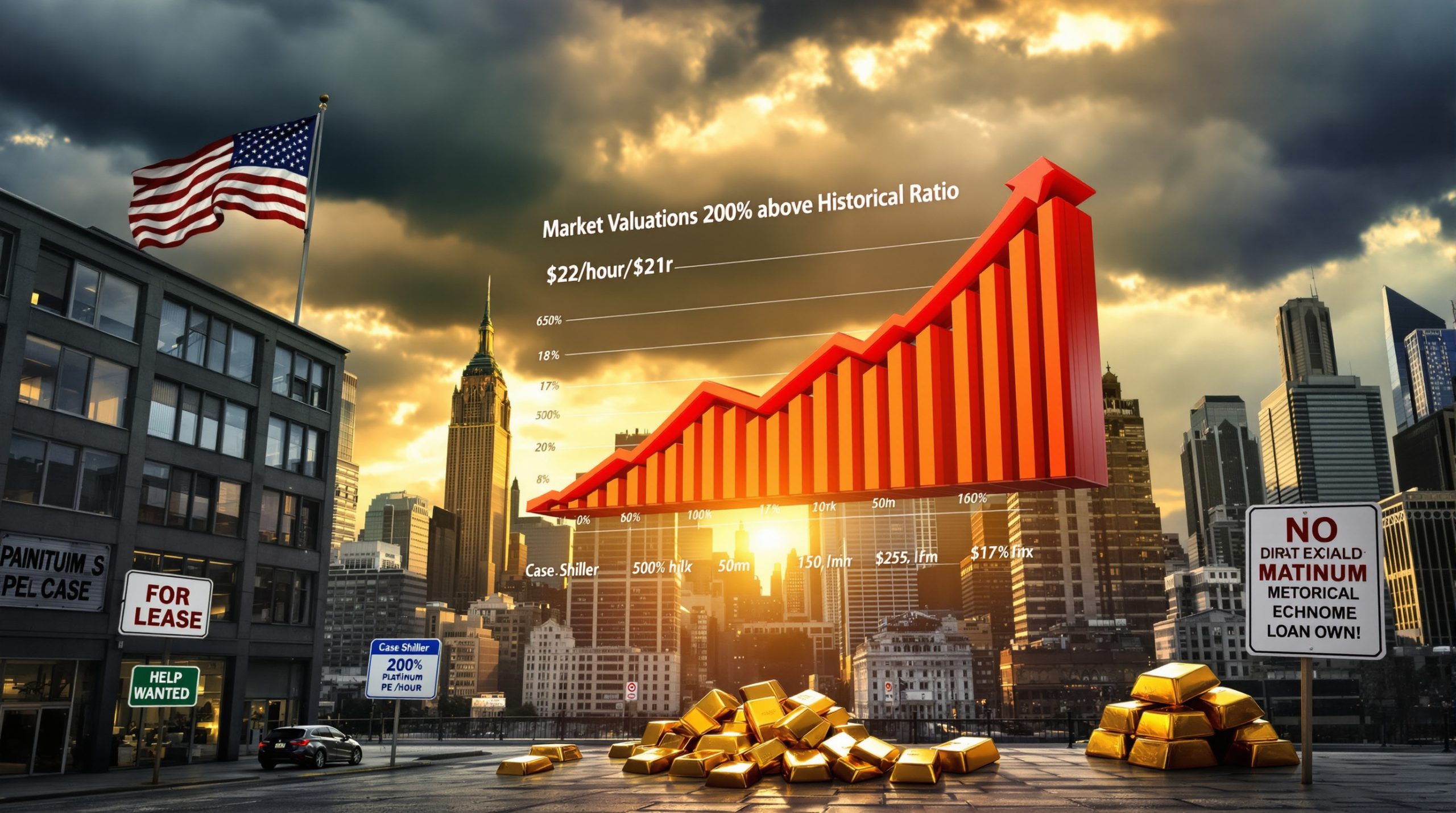What's Driving the Current Silver Price Rally?
Silver's Impressive Performance in 2025
Silver has emerged as one of the standout performers in the precious metals analysis market this year, with soaring silver prices surging an impressive 27% year-to-date in 2025. Currently trading around $35.70 per ounce, silver has reached its highest levels in over a decade, capturing the attention of both institutional and retail investors.
This remarkable performance comes with significant historical context. Silver has approached the psychological $50 per ounce threshold twice before—first in 1980 during the infamous Hunt Brothers' market corner attempt, and again in 2011 amid a post-financial crisis commodities boom. Many market observers are now watching closely to see if the current rally has the momentum to test those historic highs.
"The metal's performance has been particularly impressive given earlier concerns about potential headwinds," notes Michael Widmer, metals strategist at Bank of America. "Despite predictions of demand destruction from trade tensions and renewable energy policy shifts, silver has demonstrated remarkable resilience."
Industrial Demand Remains Strong Despite Predictions
A unique aspect of silver's market dynamics is that approximately 80% of demand comes from industrial manufacturers—a fact that distinguishes it significantly from gold. This industrial backbone has provided stable support for prices throughout 2025.
According to SMM market data, consumption in traditional sectors like tableware and electronics has remained steady, while demand from solar panel manufacturers continues to show growth. This is particularly noteworthy as earlier analyst concerns about potential silver tariff impacts and renewable energy policy shifts have largely failed to materialize.
The solar sector deserves special attention in silver's demand profile. Despite efficiency improvements reducing the amount of silver needed per panel, the sheer volume growth in solar installations—particularly in emerging markets—has maintained strong demand pressure. Each solar panel contains approximately 20 grams of silver, and with global installations continuing to accelerate, this sector remains a crucial driver of silver consumption.
"Silver's industrial applications span electronics, solar energy, and tableware, creating unique price dynamics compared to gold," explains Michael Widmer. "This dual identity as both precious metal and industrial input gives silver market characteristics unlike any other metal."
How Are American Investors Responding to Rising Silver Prices?
The Sellers: Cashing In on Family Treasures
As silver prices climb, many Americans are searching their homes for forgotten silver items to capitalize on the rally. One particularly active segment involves pre-1964 U.S. coins, which contain 90% silver content and now command significant premiums over their face value.
With current soaring silver prices around $35.70 per ounce, a pre-1965 quarter-dollar coin is now worth over $6.50 in melt value alone—a compelling proposition for those who acquired these coins decades ago or inherited them from family members.
Russ Bega of Harlan J. Berk Ltd, a prominent coin dealer, observes: "Many of our customers bought silver at around $10 per ounce decades ago. Now with prices more than tripling, they're deciding it's time to cash in."
In one remarkable example reported by SMM, a demolition worker discovered old silver coins hidden within the walls of a house scheduled for demolition. The cache, which included numerous pre-1964 dimes and quarters, was valued at over $20,000 based on silver content alone—highlighting the potential windfall for those who discover forgotten silver.
The Buyers: "Silver Stackers" Continue Accumulating
Despite rising prices—or perhaps because of them—another segment of Americans continues to aggressively purchase silver. These "silver stackers," as they've come to be known in the precious metals community, view the current rally as validation of their investment thesis rather than a reason to take profits.
Andrei Hnedchyk of Honest Coin Shop reports that store foot traffic has increased approximately 20% in recent months, with silver stackers dominating the customer base. "Even with prices at decade highs, these buyers continue making regular purchases. They view silver as a hedge against economic uncertainty."
Perhaps most remarkably, many dealers report they're doubling their monthly silver purchases to meet surging demand. In one notable transaction, Hnedchyk mentioned a customer who recently purchased a 1,500-ounce silver bar—a substantial investment representing over $53,000 at current prices.
"There's definitely a fear of missing out driving continued buying," notes Hnedchyk. "Many stackers remember the previous runs toward $50 and don't want to be left behind if this rally continues."
What Makes Silver Unique in the Precious Metals Market?
Silver's Dual Nature: Investment and Industrial Metal
Unlike gold, which serves primarily as a store of wealth and jewelry material, silver maintains a unique position straddling both investment and industrial worlds. This dual nature creates market dynamics unlike any other precious metal.
While approximately 80% of silver demand comes from industrial applications, the metal simultaneously maintains its monetary heritage and investment appeal. This creates interesting price drivers that gold doesn't experience:
- Industrial cycle sensitivity: Silver prices respond to manufacturing and economic activity
- Technological innovation impact: New applications can significantly shift demand patterns
- Smaller market size: The silver market's relatively modest size makes it more volatile than gold
- Higher volatility: Price swings tend to be more pronounced than in the gold market
Silver's conductivity properties—the highest of any element—ensure its continued relevance in electronics manufacturing. Additionally, its antibacterial qualities maintain demand in medical applications, while its reflective properties secure its place in solar technology.
Investment Vehicle Growth
Institutional interest in silver has grown substantially alongside retail participation. The iShares Silver Trust, the world's largest silver ETF, has increased its holdings by nearly 11 million ounces in 2025 alone, reflecting substantial capital flows into the metal.
This ETF growth creates a self-reinforcing cycle: as more investors allocate capital to silver funds, these vehicles must purchase physical metal to back their shares, creating additional upward pressure on prices. The transparency of these ETF holdings also provides real-time visibility into institutional sentiment toward the metal.
The combination of industrial utility and investment appeal creates a powerful dynamic during periods of economic uncertainty. When investors seek safe havens during turbulent markets, silver benefits from both investment flows and its industrial floor value—a compelling proposition in today's geopolitically complex environment.
Where Are Investors Selling Their Silver?
Traditional Dealers Seeing Increased Activity
Coin shops across America report significantly higher traffic from both buyers and sellers, creating a vibrant secondary market for silver products. These traditional brick-and-mortar establishments remain the primary venue for physical silver transactions, particularly for sellers liquidating smaller quantities.
"We're seeing customers we haven't heard from in years coming in with coins they purchased or inherited decades ago," says Russ Bega. "Many are surprised by how much their silver has appreciated, especially those who acquired it when prices were under $10 per ounce."
Estate jewelry dealers are similarly experiencing a surge in inquiries. Daniel Herzner, who specializes in estate jewelry purchases, notes: "We're fielding significantly more calls from clients looking to sell inherited silverware and jewelry pieces. Rather than keeping these items stored away, they prefer to cash them in directly while prices are elevated."
This selling activity creates a healthy market liquidity, allowing dealers to replenish inventory to meet ongoing demand from buyers without significant premium expansion.
Types of Silver Being Liquidated
The current rally has brought forth a diverse array of silver items being sold, including:
- Family heirloom coins and collections: Often acquired decades ago or inherited from relatives
- Sterling silverware and flatware sets: Complete 12-piece dinner sets can contain substantial silver content
- Silver jewelry pieces: Particularly older pieces with higher silver content than modern equivalents
- Silver bars and bullion coins: Investors taking profits on positions established at lower prices
Pre-1964 U.S. coinage has proven particularly popular for sellers due to its recognizable form and easy verification. These coins—dimes, quarters, half-dollars, and dollars minted before 1965—contain 90% silver and are currently worth multiple times their face value.
For example, at current soaring silver prices around $35.70 per ounce:
- A pre-1965 dime: worth approximately $2.60 in silver content
- A pre-1965 quarter: worth approximately $6.50 in silver content
- A pre-1965 half-dollar: worth approximately $13.00 in silver content
This significant premium over face value makes these coins particularly attractive liquidation targets for those who acquired them years ago or discovered them in inherited collections.
What's Behind the "Silver Stacker" Mentality?
Hedging Against Economic Uncertainty
The continued buying by "silver stackers" despite elevated prices reveals a deeply held conviction among this investor segment. Many view silver not merely as a trading vehicle but as financial insurance against broader economic instability.
"Our regular customers see silver as protection during uncertain economic times," explains Andrei Hnedchyk. "They make consistent purchases regardless of short-term price movements, viewing their accumulation strategy as a long-term hedge."
This perspective has historical precedent. Silver has often performed well during periods of financial stress, particularly when accompanied by inflation concerns or currency devaluation fears. The metal's tangibility and lack of counterparty risk appeal to investors concerned about systemic financial vulnerabilities.
Some notable hedging motivations cited by silver buyers include:
- Inflation protection: Silver's historical performance during inflationary periods
- Currency debasement concerns: Protection against potential purchasing power erosion
- Financial system fragility: Physical metal ownership outside banking systems
- Geopolitical risk insurance: Hard asset ownership during uncertain global conditions
The substantial 1,500-ounce transaction mentioned by Hnedchyk represents a significant commitment to this hedging strategy—approximately $53,000 at current prices.
Historical Price Patterns Creating FOMO
Silver's two previous approaches to the $50/oz level—in 1980 and 2011—have created powerful psychological anchors for investors. These historical precedents fuel a fear of missing out (FOMO) that drives continued accumulation despite elevated prices.
"Many buyers remember silver's dramatic moves in previous cycles," notes Russ Bega. "They're convinced we're in the early stages of a similar pattern and don't want to miss potential upside if prices approach previous highs."
This psychology creates an interesting market dynamic where rising prices, rather than deterring purchases, actually accelerate them as buyers fear being left behind. This self-reinforcing cycle can create powerful momentum in silver markets, particularly given the relatively small size of the overall market compared to gold or major financial assets.
"The memory of previous bull markets is a powerful driver of current accumulation behavior," observes Hnedchyk. "Many stackers view today's $35.70 price as still attractive compared to potential $50+ targets."
How Does Silver Compare to Gold in This Rally?
Price Performance Similarities
Both silver and gold have posted impressive gains in 2025, with each metal up approximately 27% year-to-date. This matching performance is particularly noteworthy given the different fundamental drivers behind each metal.
The parallel performance suggests both metals are benefiting from similar macroeconomic factors—likely including inflation concerns, geopolitical tensions, and monetary policy expectations. However, silver's industrial exposure would typically create more divergence, making the synchronized rally particularly interesting to market observers.
This synchronized strength across precious metals generally indicates broad-based investor confidence in the sector rather than metal-specific factors driving performance. Such correlation often occurs during the middle phases of precious metals bull markets when momentum attracts capital across the complex.
Key Differences in Market Fundamentals
Despite their similar price performance this year, gold and silver markets operate with fundamentally different structures and drivers:
| Factor | Silver | Gold |
|---|---|---|
| Market Size | Smaller (~$30B annual production) | Larger (~$200B annual production) |
| Industrial Demand | ~80% of consumption | ~10-15% of consumption |
| Primary Drivers | Industrial use, retail investment | Central bank purchases, ETF flows |
| Volatility | Higher (historically 1.5-2x gold) | Lower |
| Storage Costs | Higher (bulkier per $value) | Lower |
Silver's smaller market size creates naturally higher volatility—both in upside potential and downside risk. This has historically translated to silver outperforming gold in bullish environments while experiencing deeper corrections during downturns.
The gold-silver ratio analysis (the number of silver ounces needed to purchase one ounce of gold) provides valuable context for relative valuation. While this ratio has averaged approximately 65:1 over recent decades, it has experienced significant fluctuations—reaching nearly 120:1 during market stress and compressing below 40:1 during silver bull markets.
These structural differences suggest that while gold and silver may move in the same direction, the magnitude of silver's moves—both up and down—often exceeds gold's performance over complete market cycles.
What Could Happen Next in the Silver Market?
Historical Precedents for Price Movements
Silver's previous approaches to the $50/oz level provide important historical context for current market participants. Both the 1980 and 2011 rallies reached similar price points before experiencing significant corrections, though the circumstances differed considerably:
1980 Peak: Driven primarily by the Hunt Brothers' attempt to corner the silver market, prices briefly touched $50 before collapsing when regulatory changes forced liquidation of leveraged positions. This event was more manipulation than fundamental valuation.
2011 Peak: A more fundamentally-driven rally occurred post-financial crisis, with silver reaching nearly $50 amid strong investment demand, ETF growth, and inflation concerns following quantitative easing programs. The subsequent correction was less severe but still substantial.
Today's rally shows both similarities and differences to these historical events. Like 2011, current strength comes amid monetary policy concerns and ETF inflows. However, today's industrial demand picture appears more robust, potentially providing stronger support during any correction phases.
Factors That Could Extend or End the Rally
Several key variables will likely determine whether silver continues its ascent toward previous highs or experiences a correction:
Industrial Demand Sustainability:
- Continued solar industry growth
- Electronics sector recovery
- Emerging market manufacturing activity
- Green energy transition policies
Investment Flows:
- ETF participation trends
- Retail investor sentiment
- Institutional allocation shifts
- Cryptocurrency competition for alternative asset flows
Macroeconomic Conditions:
- Inflation persistence
- Interest rate trajectories
- Dollar strength/weakness
- Recession probabilities
Supply Constraints:
- Mining production challenges
- Recycling volume response to higher prices
- By-product output from base metal mining
- Ore grade deterioration issues
A balanced assessment suggests both bullish and bearish scenarios remain plausible. Silver's dual nature as both industrial metal and investment asset means its price path will depend on the complex interaction between economic growth, inflation expectations, and investor sentiment.
"Silver markets have historically demonstrated remarkable volatility during momentum-driven phases," notes Michael Widmer. "The metal's relatively small market size compared to gold means capital flows can create outsized price impacts in both directions."
FAQ About Silver Investing in 2025
What makes pre-1964 U.S. coins valuable?
Pre-1964 U.S. dimes, quarters, half-dollars, and dollar coins contain 90% silver, giving them significant melt value above their face value. With current soaring silver prices around $35.70 per ounce, a pre-1965 quarter is worth over $6.50 based on its silver content alone.
This substantial premium over face value explains why these coins largely disappeared from circulation decades ago. Collectors and investors recognize them by their distinctive ring when dropped on a hard surface and their different edge appearance compared to modern cupronickel coins.
How is silver different from gold as an investment?
While gold is primarily an investment and jewelry metal, silver serves dual purposes with approximately 80% of demand coming from industrial applications. This makes silver prices potentially more responsive to economic activity while still maintaining precious metal investment characteristics.
Silver's industrial component creates both opportunities and risks not present with gold. During economic expansion, silver can benefit from both industrial demand and investment flows. However, during severe economic contractions, industrial demand erosion can partially offset investment demand, creating different performance characteristics from gold.
What are "silver stackers"?
"Silver stackers" refers to investors who systematically accumulate physical silver (coins, bars, rounds) as a hedge against economic uncertainty, inflation, or currency devaluation. These investors typically make regular purchases regardless of short-term price fluctuations.
The stacking mentality emphasizes consistent acquisition over market timing, with many practitioners allocating a fixed percentage of income to precious metals purchases. The approach focuses on ounce accumulation rather than dollar value, with many stackers tracking their holdings by weight rather than fluctuating market value.
How high could silver prices go in this cycle?
While historical price peaks approached $50 per ounce in both 1980 and 2011, each market cycle has unique characteristics. Current silver supply deficits and the potential silver market squeeze impact on global finance, along with investment flows and macroeconomic conditions,
Ready to Spot the Next Major Mineral Discovery?
Stay ahead of the market with Discovery Alert's proprietary Discovery IQ model, delivering instant notifications on significant ASX mineral discoveries and transforming complex data into actionable insights. Explore why historic discoveries can generate substantial returns by visiting Discovery Alert's dedicated discoveries page and begin your 30-day free trial today.




